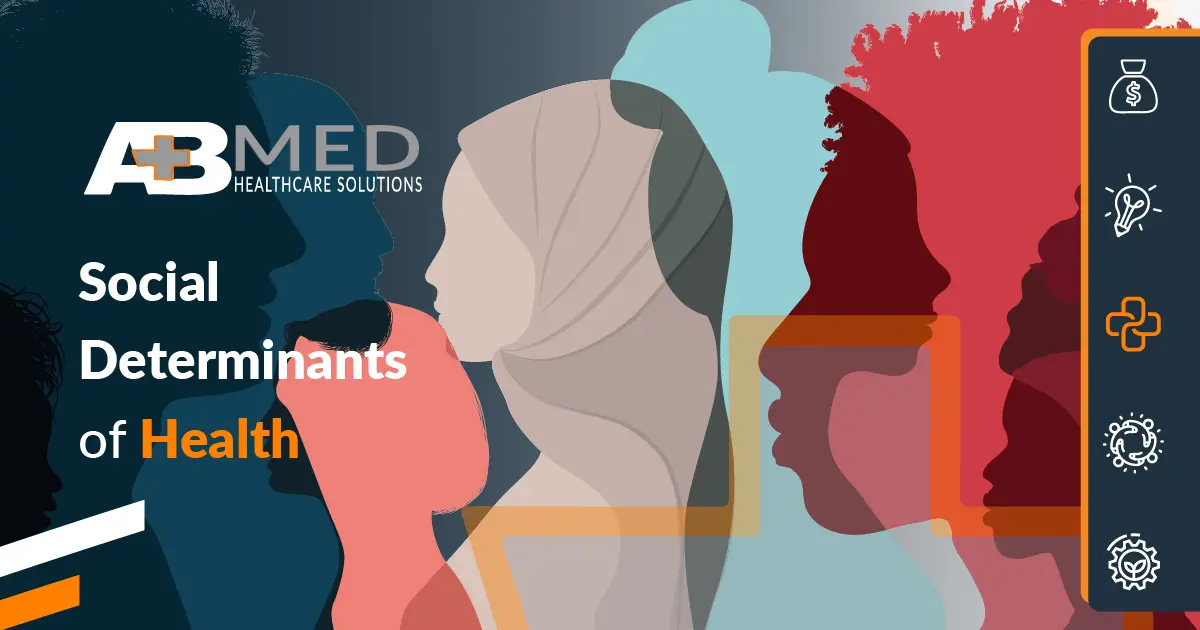Unfortunately, the COVID-19 pandemic has worsened and exacerbated this public health issue. To best battle diabetes within our communities, local governments, healthcare systems, and healthcare leaders need to establish strategies to both prevent and proactively address diabetes diseases. Let’s explore such strategies and how COVID-19 has impacted diabetes care overall.
How COVID-19 Impacts People with Diabetes
Those with diabetes are at an increased risk of experiencing serious complications following an infection from COVID-19. According to the American Diabetes Association, people with diabetes are more likely to have severe symptoms when infected with any virus–including COVID-19–and those infected do have an elevated risk of diabetic ketoacidosis, which can be life-threatening [iii].
As COVID-19 continues to place pressure on health systems everywhere, patients with diabetes need to be aware of their heightened risk for complications. While much of the public health focus the past few years has centered around preventing the spread of COVID-19 specifically, communities and healthcare systems also need to prioritize diabetes prevention initiatives to protect those with an increased vulnerability.
How Local Government, Healthcare Systems, and Healthcare Leaders Can Develop Strategies to Help Their Communities Battle Diabetes
When it comes to diabetes care, the silver lining is that the right strategies and tools can help dramatically impact the prevalence of these diseases. Almost 95% of diabetes in the United States is type 2 diabetes which research has shown can be both prevented and delayed with simple lifestyle changes [v].
However, local governments, healthcare systems, and healthcare leaders must make an active effort to help their communities understand these strategies and have access to the right tools. Below are three steps that can help communities battle diabetes.
- Establish a Monkeypox Infection Control Team : When populations know what signs and symptoms to look for, they will be more likely to seek treatment when those signs arise. Since a significant portion of those with diabetes in the U.S. are unaware that they have diabetes, more must be done to educate the public about the risks of diabetes and what factors can increase their chances of developing it.
- Increase Access to Screenings: The U.S. Preventive Services Task Force recommends that adults aged 35 and older who are overweight or obese be screened for prediabetes and type 2 diabetes [vi]. They also suggest that patients with prediabetes have access to the right preventive interventions.
- Develop Community Lifestyle Change Programs: As part of their National Prevention Diabetes Prevention Program, the CDC supports lifestyle change programs that “teach participants to make lasting lifestyle changes, like eating healthier, adding physical activity into their daily routine, and improving coping skills.” [vii]. These programs aim to be affordable and accessible to help participants reduce their risk of developing diabetes and improve their health overall.
How AB Med Can Help You Develop, Execute, And Evaluate Your Public Health Initiatives
If you are interested in incorporating the initiatives listed above in your community but unsure where to start, we can help. At AB Med, we have years of experience developing innovative healthcare solutions that solve complex health problems. We specialize in managing public health initiatives from inception all the way to execution. So, whether you need help creating a diabetes prevention initiative from scratch or executing on a plan you already have in place, we would love to partner with you to help keep your community healthy. Let’s Connect.
REFERENCES & RESOURCES
- World Health Organization (2020). The Top 10 Causes of Death. [online] World Health Organization. Available at: https://www.who.int/news-room/fact-sheets/detail/the-top-10-causes-of-death.
- CDC (2022). The Facts, Stats, and Impacts of Diabetes. [online] Centers for Disease Control and Prevention. Available at: https://www.cdc.gov/diabetes/library/spotlights/diabetes-facts-stats.html.
- www.diabetes.org. (n.d.). How COVID-19 Impacts People with Diabetes | ADA. [online] Available at: https://www.diabetes.org/coronavirus-covid-19/how-coronavirus-impacts-people-with-diabetes.
- Barrett, C.E. (2022). Risk for Newly Diagnosed Diabetes 30 Days After SARS-CoV-2 Infection Among Persons Aged 18 years — United States, March 1, 2020–June 28, 2021. MMWR. Morbidity and Mortality Weekly Report, [online] 71. Available at: https://www.cdc.gov/mmwr/volumes/71/wr/mm7102e2.htm?s_cid=mm7102e2_w.
- www.cdc.gov. (2019). Prevent Type 2 Diabetes | 6|18 Initiative | CDC. [online] Available at: https://www.cdc.gov/sixeighteen/diabetes/index.htm.
- www.uspreventiveservicestaskforce.org. (n.d.). Recommendation: Screening for Prediabetes and Type 2 Diabetes | United States Preventive Services Taskforce. [online] Available at: https://www.uspreventiveservicestaskforce.org/uspstf/recommendation/screening-for-prediabetes-and-type-2-diabetes.
- www.cdc.gov. (2019). What Is the National DPP? | National Diabetes Prevention Program | Diabetes | CDC. [online] Available at: https://www.cdc.gov/diabetes/prevention/what-is-dpp.htm.
By: Erik McLaughlin MD, MPH and Aikaterini Papadopoulou, B.Arch






